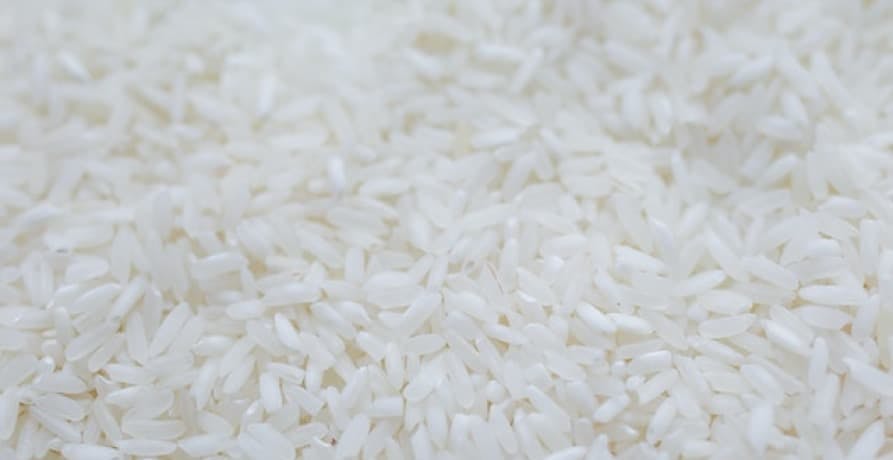ESG / CSR
Industries
Is Almond Milk Bad for the Environment?



Plant-based milks are so popular these days, that odds are – you take your coffee with oat milk or almond milk instead of traditional cow’s milk. Even cafes in Paris are catching onto the trend, as they begin to offer lattes or a chocolat chaud with almond milk or other plant-based milk options.
💡 People have turned to plant-based milks like almond milk for various reasons, such as cutting-calories, supporting veganism, or reducing emissions – but some have started to wonder: is almond milk bad for the environment?
The production of cow’s milk creates excessive greenhouse gasses – up to three times the amount of emissions produced in comparison to the plant-based alternatives available. However, it seems that almond milk may not be the best choice for sustainability as we may think.
In this article, we'll explain what almond milk is, the benefits of almond milk, why it's bad for the environment, and sustainable alternatives to almond milk.
What is Almond Milk?
Almond milk is a type of plant-based milk that is made through extracting almonds and water. Almond milk has a thin, watery texture and soft, nutty flavor due to the fact the milk is made from almonds.
👉 Almond milk doesn’t have to be bought in stores; it can be made at home using raw, un-roasted almonds, a cheesecloth, and a high-speed blender. Almond milk is most often used as a substitute for cow’s milk for those who are lactose intolerant or follow a vegan diet.
How popular is Almond Milk?
Almond milk is extremely popular, even in the midst of other plant-based milks, like oat milk, taking over the market.
💡 In the early days of dairy-free milk, soy milk was often the only option, but ever since 2013 – almond milk has taken the title of the most popular plant-based milk in the U.S.
The global sales for almond milk were up by nearly six billion dollars in 2018, meaning the sales have increased by around fourteen percent each year. Almond milk is expected to achieve thirteen billion dollars in sales by 2025.
If there are so many different types of plant-based milk, especially as the market for plant-based diets grows exponentially in the U.S. – why does almond milk continue to be so successful in the market?
As someone who eats a plant-based diet myself, I purchase almond milk every week over any other plant-based milk. It’s the most versatile of all plant-based milk options: it’s good for cooking, it’s good for coffee, and it’s subtle in taste. Oat milk is good for coffee, but too heavy for a lot of recipes. Soy milk has the added benefit of a higher protein content, and can accentuate the flavors in a lot of vegan recipes – but isn’t as manipulative in recipes in the same way that almond milk is. It’s easy to pour too much soy or oat milk into a recipe, and it overpower the dish. Since almond milk is light in texture and flavor, it’s easy to course correct.
What are the benefits of almond milk?
The amount of nutrients in a mere, 3.5 ounce serving of unsweetened almond milk are abundant as well as low in calories – making it a popular choice of plant-based milk for many. One serving of almond milk is usually fifteen calories, has 0.3 grams of carbohydrates and fiber, no sugar, 1.2 grams of fat, and even 0.6 grams of protein.
👉 Almond milk contains many vitamins that can often be lacking in one’s daily diet. Almond milk has six percent of the daily value recommended for Vitamin A, a whopping twenty two percent of vitamin E, nine percent of vitamin D, one percent of potassium, seventeen percent of calcium, and even four percent of phosphorus.
Here's a table breaking down the health benefits of almond milk:
Almond Milk Nutrition Facts
Nutrients in a 3.5-ounce (100-gram) serving of plain, unsweetened almond milk include:
| Nutrient | Amount |
|---|---|
| Calories | 15 |
| Carbs | 0.3 grams |
| Fiber | 0.3 grams |
| Sugar | 0 grams |
| Protein | 0.6 grams |
| Fat | 1.2 grams |
| Vitamin A | 6% of the Daily Value (DV) |
| Vitamin E | 22% of the DV |
| Vitamin D | 9% of the DV |
| Potassium | 1% of the DV |
| Calcium | 17% of the DV |
| Phosphorus | 4% of the DV |
Almond milk is used not just for subliminal health benefits, but it can often be much easier to digest than cow’s milk – as the human body is actually not designed to consume cow’s milk. This is why so many people shift to dairy-free diets in order to improve their digestive health or even clear up their skin.
Choosing a plant-based beverage like almond milk isn’t just good for your health, but could prove to be a better choice for the environment than cow’s milk.
💡 The production of cow’s milk creates excessive greenhouse gas emissions, uses ten times the amount of land for cattle, anywhere from two to twenty times the amount of water, and doesn’t mitigate animal suffering.
Therefore, switching to a plant-based milk like almond milk can help you to reduce your carbon footprint, while also improving your health.
👉 However, it is important to note that the production of almond milk, similar to the production of cow’s milk – results in high levels of eutrophication.
Therefore, it pegs the question – is almond milk bad for the environment? Furthermore, it raises the question if almond milk is even worse for the environment as opposed to traditional dairy and cow's milk.

Is almond milk worse for the environment than dairy?
Almond milk creates an environmental impact, but it is still amongst the milks that produce the fewest greenhouse gas emissions. This is mainly because almond milk requires less land than dairy milk to produce. However, almond milk is still notorious for the vast amount of water it requires to grow and process.
💡 Did you know that California-grown almonds account for 80% of the world's commercial almond production?
Besides contributing to eutrophication, almond milk isn't the best for the environment for a few more reasons.
As the demand for almond milk has increased exponentially, so has the need for production. To produce the amount of almonds necessary to upkeep with the newfound demand of almond milk, California has to reallocate their water sources – and it takes nearly fifteen gallons of water to produce a mere sixteen almonds.
Over 23,000 acres of land have been turned into almond farms to produce almond milk, and 16,000 acres of those lands used to be wetlands. Long story short – it takes a lot of water to make almond milk: as much as up to 23 gallons of water to produce a single gallon of almond milk.
👉 Water is already a limited resource, and the amount it takes to produce almond milk is just making it even scarcer. For instance, the San Joaquin Valley, which is home to many “almond farms” – is sinking annually, as the level of groundwater continues to decrease.
Pesticides have also been used to increase the production of almonds for almond milk, which is contaminating drinking water for those who live near California’s farms. This also prohibits the practice of other sustainable farming tactics such as climate smart farming.
You don’t have to give up almond milk, but it may be a good idea to rethink way you source it. For instance, you could make your own almond milk at home to mitigate the use of pesticides, or ensure that you purchase an organic bottle to practice the ideals of green living.
However, there are so many different plant-based milks on the market now – that it could be time to switch it up, try a different nut milk, and reduce your environmental impact while maybe even finding a plant-based milk you like even more.
👉 Ultimately, almond milk isn't worse for the environment than dairy – but it still creates a profound environmental impact due to the high water footprint of almond milk, and there are more sustainable plant-based milk alternatives such as soy, oat, hemp, and pea milks.
What are some sustainable alternatives to Almond Milk?
Plant-milks that are proven to be more environmentally friendly than almond milk include coconut milk, soy milk, oat milk, rice milk, hemp-seed milks, and more.
Whether you’re striving to be dairy free, plant-based, or more sustainable and want to avoid the negative environmental impacts of almond milk – don’t fret. There are plenty of plant-based milk options on the market these days, especially if you live in the U.S.
Here are four different types of plant-milk options to choose from if you believe almond milk is bad for the environment, and are open to new alternatives.
Soy milk
Before almond milk took the world by storm, once upon a time – there was soy milk.
Soy milk is one of the more unique plant-based milk options, as it offers a high source of protein and richer, more prominent flavor than the subtle taste of almond milk. For this reason, soy milk can be preferred in coffee or certain vegan recipes, as the higher protein content results in a more voluminous taste – but is soy milk sustainable?
While soy milk may be subject to produce more greenhouse gas emissions than almond milk, it requires much less land or water to produce. If you’re looking to reduce your water consumption – soy milk might be a good choice!

Oat milk
Taking the plant-based market by storm, oat milk is growing in popularity amongst coffee-shop-goers – more so than any plant-based milk has before.
Oat milk is full in texture, and creamy – making it great for lattes and cooking.
However, oat milk poses an environmental threat, as many commercial oat milk brands make use of sunflower or rapeseed oil – which require processing that results in carbon dioxide emissions.
💡 The good news is that, while oat farms do indeed require a little bit more land than almonds – they don’t require as much water to produce. This makes oat milk a good choice for both your taste buds and the environment.

Rice milk
One of the lesser known plant-based milks out there is rice milk. Rice milk is made in a similar way to almond milk – with rice, water, and a high-speed blender. Similar to almond milk, rice milk is light in taste and thin in consistency.
The downside to rice milk is that it uses just as much water as almond milk does, and is the plant-based milk that produces the most emissions – making it not the most sustainable plant-milk option that there is.

Coconut milk
You may only think of coconut milk as a part of many Indian or Cuban recipes when cooking, but did you know that you could purchase coconut milk in lighter, drinkable versions as you do with any other type of plant milk?
Coconut milk will have a nuttier, more distinct flavor than oat milk will – but is ultimately one of the best environmentally friendly plant-based milks that you can choose. Coconut farms don’t impact land the way that almonds do, don’t require a lot of water, and no deforestation needs to happen to produce coconut milk.
It’s true that coconut milk isn’t as versatile as the rest of the plant-based milk options above, but it is a great choice if you want to contribute to both the environmental benefits of veganism as well as reducing your carbon footprint and water consumption.

So, is almond milk bad for the environment?
Let’s put it this way, almond milk isn’t as bad for the environment as the production of cow’s milk is – but it isn’t good either. The extensive amount of water that is necessary for the creation of commercial almond milk is alarming, and if we want to find a way to prevent the depletion of an already limited resource: we need to either change the way almond milk is made, or switch up our plant-based milks.
What about Greenly?
If reading this article about almond milk and how it is bad for the environment has made you interested in reducing your carbon emissions to further fight against climate change – Greenly can help you!
At Greenly we can help you to assess your company’s carbon footprint, and then give you the tools you need to cut down on emissions. We offer a free demo for you to better understand our platform and all that it has to offer – including assistance with boosting supplier engagement, personalized assistance, and new ways to involve your employees.
Click here to learn more about Greenly and how we can help you reduce your carbon footprint.






